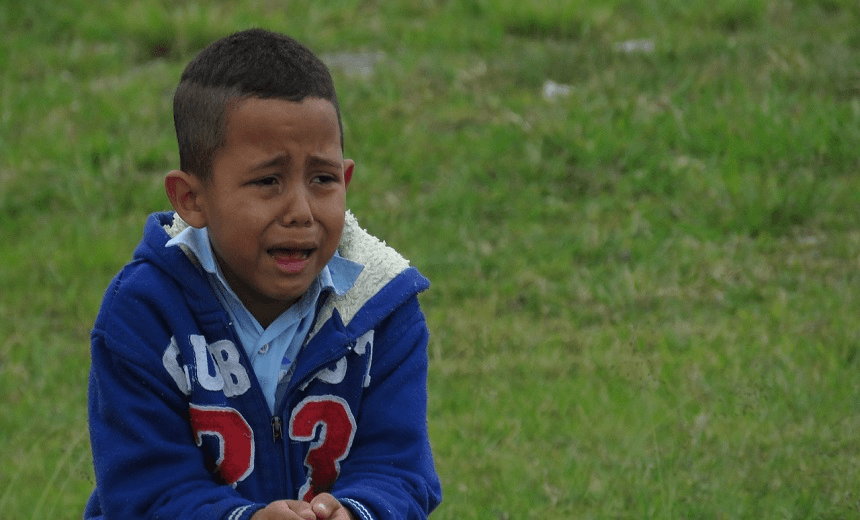Mum of three and clinical psychologist Holly Coombes has some tips for all parents about supporting children through anxiety.
One of the hardest things as a parent can be to see your child struggling, and not know what to do. Parenting a child with anxiety can take this to the next level. You want to be empathetic and supportive, but you also don’t want to feed the anxiety. It’s also hard to comprehend how something that seems small has become so all-encompassing in your child’s mind.
Anxiety in kids can show up in a number of ways. A common one is difficulty getting to sleep, usually because they are thinking about all the little things that could happen, or that they did less than perfectly that day. Stomach aches, nausea, and needing to go to the bathroom often can be an indication of anxiety, especially if it is worse at certain times, such as in the mornings before school. Over-the-top “meltdowns” when pushed to do something can also be a feature, illustrating that the child is completely overwhelmed and needs some assistance to calm themselves.
Anxiety is a physical response to a cognitive perception. The physical response is inbuilt in humans to protect us in the presence of danger. It’s very handy for getting us ready to fight or run. It’s not so helpful when the “danger” is not actually dangerous. For a child, it can be very distressing. The physical response itself is scary and it can feel uncontrollable. They are often aware that their feelings and behaviour are not logical, but that doesn’t make it any less real for them.
So how to help? The first thing to do is to try to avoid the natural response of either dismissing the feelings as “silly” and arguing logically “you’ll be fine when you get there”; it’s also not a good idea to remove the source of distress altogether to avoid the unpleasant feelings. Research has shown that the most effective way to help a child in the grips of anxiety is to connect with your child at their level while modelling calm confidence.
If your child is distressed, get below their eye-level, and offer gentle reassuring touch or even a loving gaze to connect with them. Avoid giving advice or logical explanations.
Instead listen, really listen, to how they are feeling.
Your sole aim is to create a safe space where they can release and explore their emotions and you can then reflect them back while helping to name them. Simply the act of labelling and reflecting emotions can reduce their power.
Once a child is calm, you can work together to make a plan of action to help them work through their anxiety. This might involve learning practical anxiety management strategies like breathing techniques, reflecting on other times when they have felt anxious but gotten through it successfully, or talking to teachers and others to create a support network when anxiety comes up.
There’s a bunch of amazing resources out there to support you to support your anxious child:
The recently released book Feel a Little: Little Poems about Big Feelings by Jenny Palmer and Evie Kemp is a great way to start an ongoing conversation about the range of feelings we all experience and encouraging the sharing of feelings as a normal part of your day.
Progressive Muscle Relaxation via a script (try YouTube) is a great way to notice the difference in your body when it is tense and when it is relaxed. These techniques can then be used to help the body to relax in times of stress: Starting to freak out about going to school today? Squeeze that lemon!
Sitting Still Like A Frog by Eline Snel is a short book and a CD with mindfulness practices especially for kids. The exercises are also available online for free.
There are a number of apps out there that provide guided mindfulness. Mindfulness is a fantastic tool for all children to practice to increase awareness of how their thoughts can impact on their emotions. It can also help them to step back from upsetting thoughts into a calmer state. My favourites are the Smiling Mind app and Headspace for Kids. Both are research-based and are aimed at different age groups to best match with your child’s developmental stage.
For a step-by-step guide advising you how to best help, try Helping Your Anxious Child by Ronald Rapee et al.
You may need some extra support from professionals if the anxiety is having a significant impact on your child’s usual daily functioning. For example, if your child is missing lots of school, if they are unable to focus on their schoolwork, if they are giving up activities they used to love such as sports, or if they have withdrawn from friendships and isolated themselves. In these cases, you have a couple of options. You could talk to your family GP about your concerns and they may refer on to other agencies or recommend community based services. Or you could call your local Child and Adolescent Mental Health Service directly and discuss your concerns with them.
Most children will experience anxiety to varying degrees at some stage. Increasing awareness of the mind and body connection, along with regular practice of calming strategies will set your child up in the best position to “ride the waves” of strong emotions as they arise.
And practicing these strategies together might just help you too!
Holly Coombes is a clinical psychologist and mother of three fantastic little people. She lives with her husband in the prettiest town in New Zealand, with horses over her back fence and neighbours who make preserves.
Follow the Spinoff Parents on Facebook and Twitter.
[contact-form-7 id=”249″ title=”Flick Connect Form”]
